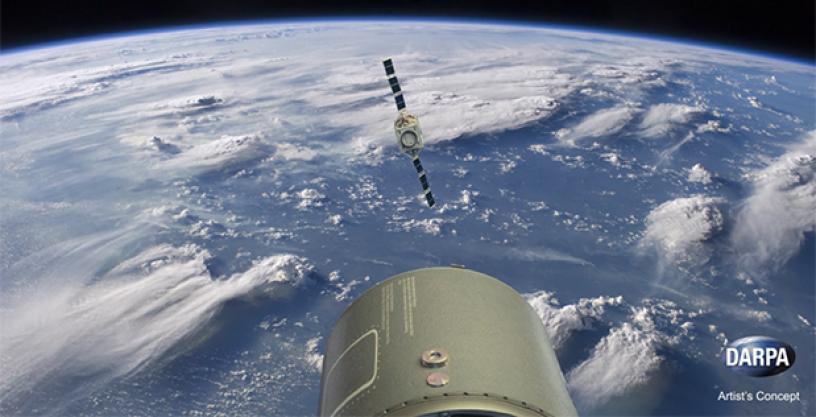Summary

Satellites today are launched via booster rocket from a limited number of ground facilities, which can involve a month or longer of preparation for a small payload and significant cost for each mission.
Launch costs are driven in part today by fixed site infrastructure, integration, checkout and flight rules. Fixed launch sites can be rendered idle by something as innocuous as rain, and they also limit the direction and timing of orbits satellites can achieve.
The goal of DARPA’s Airborne Launch Assist Space Access (ALASA) program is to develop a significantly less expensive approach for routinely launching small satellites, with a goal of at least threefold reduction in costs compared to current military and U.S. commercial launch costs.
Currently, small satellite payloads cost more than $30,000 per pound to launch, and must share a launcher with other satellites. ALASA seeks to propel 100-pound satellites into low Earth orbit (LEO) within 24 hours of call-up, all for less than $1 million per launch.
ALASA continues to make progress toward its goals.
The program had a successful Phase 1, which resulted in three viable system designs. In March 2014, DARPA selected the Boeing Company as the prime contractor for Phase 2. The ALASA Phase 2 design envisioned launching a low-cost, expendable launch vehicle from conventional aircraft. Serving as a reusable first stage, the plane would fly to high altitude and release the launch vehicle, which would carry the payload to the desired location.
The design of the ALASA Phase 2 launch vehicle technology demonstrator incorporated commercial-grade avionics, advanced composite structures and a novel propulsion system that seeks to develop a new monopropellant that combines nitrous oxide (N2O) and acetylene without the need for a separate oxidizer such as liquid oxygen. If successful, such a system would provide greater performance and reliability in a much smaller and more affordable package than traditional bipropellant rocket systems.
The ALASA program has established and demonstrated procedures to mix, store, transfer and use a significant amount of the monopropellant. The N2O-acetylene mix, called NA7, is extremely energetic, however, and the challenges of working with it as a practical rocket propellant have yet to be surmounted.
As of November 2015, DARPA had conducted four subscale static tests of the propulsion system on test stands. These tests were anomalous and pointed to the need for additional tests as part of refining the engine design and assessing the viability of the mix for use as a safe monopropellant.
DARPA believes that understanding how to use NA7 monopropellant safely could open up groundbreaking capabilities across diverse space- and non-space-related fields. To accelerate progress towards this goal, DARPA in November 2015 ceased development of the ALASA launch vehicle technology demonstrator and is focusing on monopropellant safety testing and certification.
Moreover, recognizing that the commercial sector has made significant strides in low-cost, flexible access to space in the past few years, DARPA is reassessing the emerging capabilities of commercial small-satellite launch providers. The Agency will consider opportunities to partner with providers seeking appropriate payloads for rapid, affordable access to space.
DARPA also intends to:
- Continue partnering with test ranges on groundbreaking software and hardware for future autonomous flight termination systems and build on the successful ALASA rapid mission planning system. DARPA is designing the software to be extensible to different launch vehicles—a capability that would remove the need to create proprietary, custom software for each vehicle and dramatically lower launch costs.
- Continue to investigate the development of space-based communications systems for launch range safety, to allow both greater flight rates and shorter preparation times than are possible with existing tracking, telemetry and control infrastructure.
- Continue to advance other technologies that support the goals of rapid, flexible launch.
Office
Tactical Technology OfficeThis program is now complete
This content is available for reference purposes. This page is no longer maintained.
